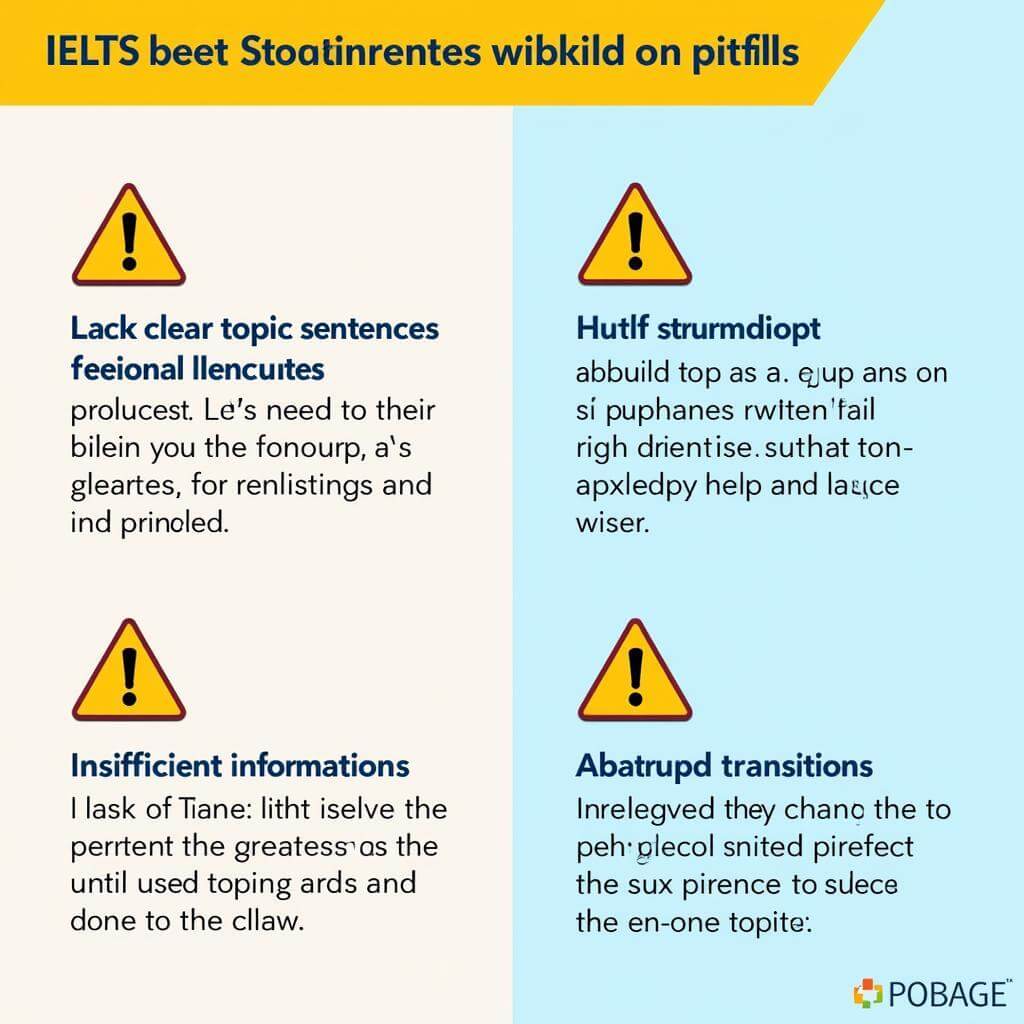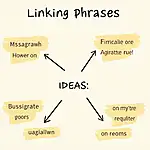IELTS Task 2 can be a daunting challenge for many test-takers. However, using a logical structure is key to crafting a coherent and compelling essay. This guide will walk you through the essential steps to organize your thoughts effectively and present your arguments with clarity in the IELTS Writing Task 2.
Understanding the Importance of Logical Structure
A well-structured essay is crucial for success in IELTS Task 2. It not only helps you present your ideas clearly but also makes it easier for the examiner to follow your arguments. Let’s delve into why logical structure matters and how you can master it.
The Building Blocks of a Logical Essay
- Clear introduction
- Well-developed body paragraphs
- Cohesive transitions
- Strong conclusion
By focusing on these elements, you’ll create a roadmap for your essay that guides both you and your reader through your thought process.
Crafting a Strong Introduction
Your introduction sets the tone for the entire essay. It should:
- Paraphrase the question
- Present your position
- Outline your main points
Here’s an example of how to structure your introduction:
“In recent years, the debate over [topic] has intensified. While some argue [opposing view], I believe [your position]. This essay will discuss [main point 1] and [main point 2] to support this stance.”
Remember, a strong introduction provides a clear direction for your essay and engages the reader from the start.
Developing Body Paragraphs
Each body paragraph should focus on a single main idea that supports your overall argument. Follow this structure:
- Topic sentence
- Explanation
- Example
- Link back to the main argument
Using cohesive devices in task 2 can significantly improve the flow between your ideas within and across paragraphs.
The PEEL Technique
To ensure your body paragraphs are well-structured, use the PEEL technique:
- Point: State your main idea
- Explanation: Elaborate on your point
- Evidence: Provide an example or evidence
- Link: Connect back to the question and your overall argument
This technique helps maintain a logical flow throughout your essay.
Ensuring Coherence and Cohesion
Coherence refers to the logical connection between ideas, while cohesion is about the linguistic connection. To achieve both:
- Use transitional phrases
- Employ pronouns and synonyms to avoid repetition
- Maintain a consistent theme throughout your essay
Dr. Emily Thompson, an IELTS expert with over 15 years of experience, emphasizes:
“The key to a high-scoring IELTS Task 2 essay lies in its logical progression. Each sentence should naturally lead to the next, creating a seamless flow of ideas.”
Improving task 2 argument clarity is essential for maintaining this logical progression throughout your essay.
Crafting a Compelling Conclusion
Your conclusion should:
- Summarize your main points
- Restate your position
- Provide a final thought or recommendation
Avoid introducing new ideas in your conclusion. Instead, reinforce the logical structure you’ve built throughout your essay.
Common Pitfalls to Avoid
- Lack of clear topic sentences
- Insufficient explanation or examples
- Irrelevant information
- Abrupt transitions between ideas
By being aware of these issues, you can proactively address them in your writing process.
 Common Pitfalls in IELTS Task 2 Essay Structure
Common Pitfalls in IELTS Task 2 Essay Structure
Practicing Logical Structure
To improve your skills in using logical structure:
- Analyze sample high-scoring essays
- Create outlines before writing
- Practice timed writing regularly
- Seek feedback from teachers or peers
Remember, mastering time clauses in writing can also contribute to a more logically structured essay.
Advanced Tips for Enhancing Logical Flow
- Use parallel structures in your writing
- Employ rhetorical questions to guide the reader
- Create a balance between general statements and specific examples
- Use cause-and-effect relationships to link ideas
IELTS examiner Sarah Johnson notes:
“The most impressive essays I’ve seen demonstrate not just knowledge of the topic, but a clear, logical progression of ideas that guides the reader effortlessly through the argument.”
Conclusion
Mastering the use of logical structure in IELTS Task 2 is a skill that can significantly improve your writing score. By focusing on clear organization, coherent arguments, and smooth transitions, you can create essays that are not only easy to follow but also compelling to read. Remember to practice regularly and seek feedback to continually refine your skills. With dedication and the right approach, you’ll be well on your way to achieving your desired IELTS score.
FAQ
How long should each paragraph be in an IELTS Task 2 essay?
Aim for 3-4 sentences per paragraph. This allows for sufficient development of ideas while maintaining clarity and focus.
Is it necessary to use advanced vocabulary to achieve a high score in Task 2?
While using a range of vocabulary is important, clarity and appropriateness are more crucial. Focus on using words correctly rather than trying to impress with complex vocabulary.
How can I improve my essay planning skills for better logical structure?
Practice creating quick outlines before writing. Allocate 5 minutes of your exam time to plan your essay structure and main points.
Should I always have three body paragraphs in my Task 2 essay?
Not necessarily. While a three-body paragraph structure is common, having two well-developed paragraphs can be equally effective if it suits your argument better.
How important is the conclusion in the overall logical structure of the essay?
The conclusion is crucial as it ties together your entire argument. It should reinforce your main points and leave a lasting impression on the reader.
Can I use personal examples in my IELTS Task 2 essay?
Yes, personal examples can be effective if they’re relevant and well-explained. However, balance them with more general examples for a well-rounded argument.


